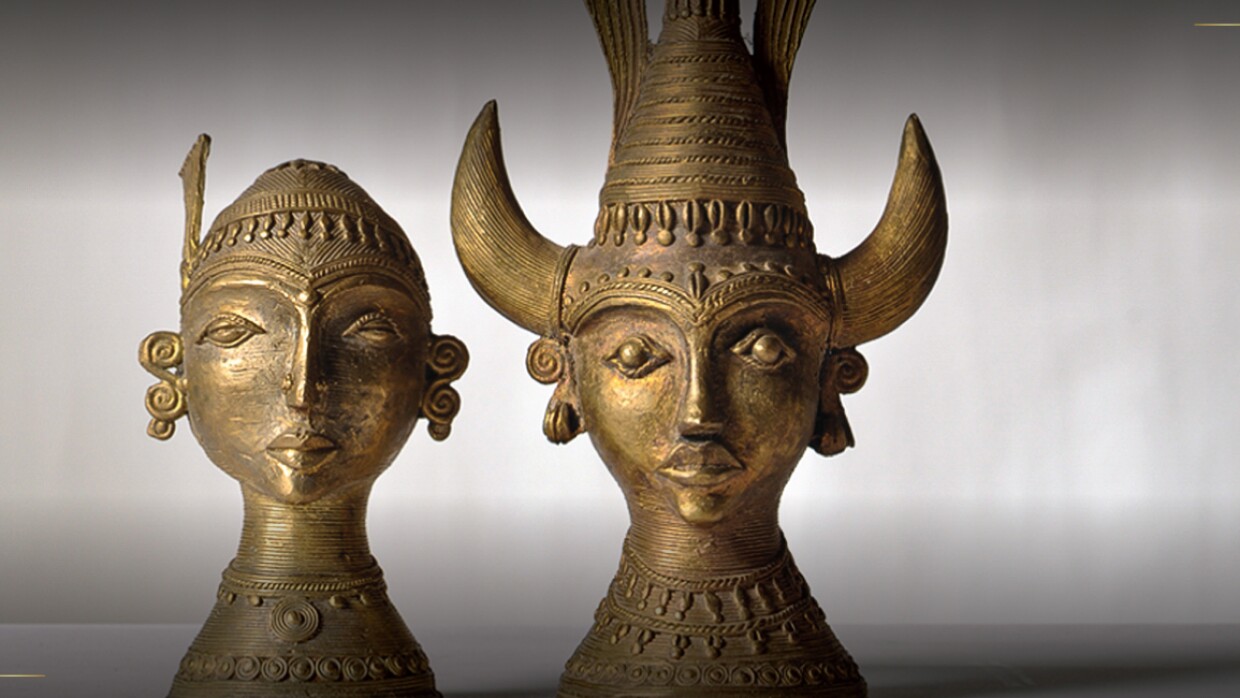Every time you enter one of the country's biggest museums, The National Museum in Delhi, which houses more than 200,000 artifacts, ordinarily experiences calmness as tourists and travellers browse through India's rich history through its various galleries. But there is one gallery, where the crowds queue up in great numbers. It’s the famous finger-sized idol of the dancing girl from the Indus Valley era depicting a high level of metal craftsmanship. As humans evolved, so did their tryst with metals. Even in India, from hand minted engraved coins to bronze sculptures of the Chola rulers and the iron pillar at Mehrauli, Delhi—it is like watching the evolution of a craft!

Evolution of an artform
But metals took their own good time to evolve across the planet. Initially, they were not preferred over stone, bones and ceramics, which were easily available. The metal had to be procured, mined and treated, which was a tedious task. Slowly communities started to form, with ironsmiths, coppersmiths and bronze smiths. In fact, copper was one of the first metals to be used widely; although it was centuries later that artisans started to create mixed metals (alloys) to increase their strength and that's when “Metal Art” was truly born. Do you know that there is a one-of-its-kind Utensil Museum in Gujarat? It showcases over 4,500 pieces crafted from brass, bronze, silver and gold inlay that tell us the evolution of metals from utility to art in India.
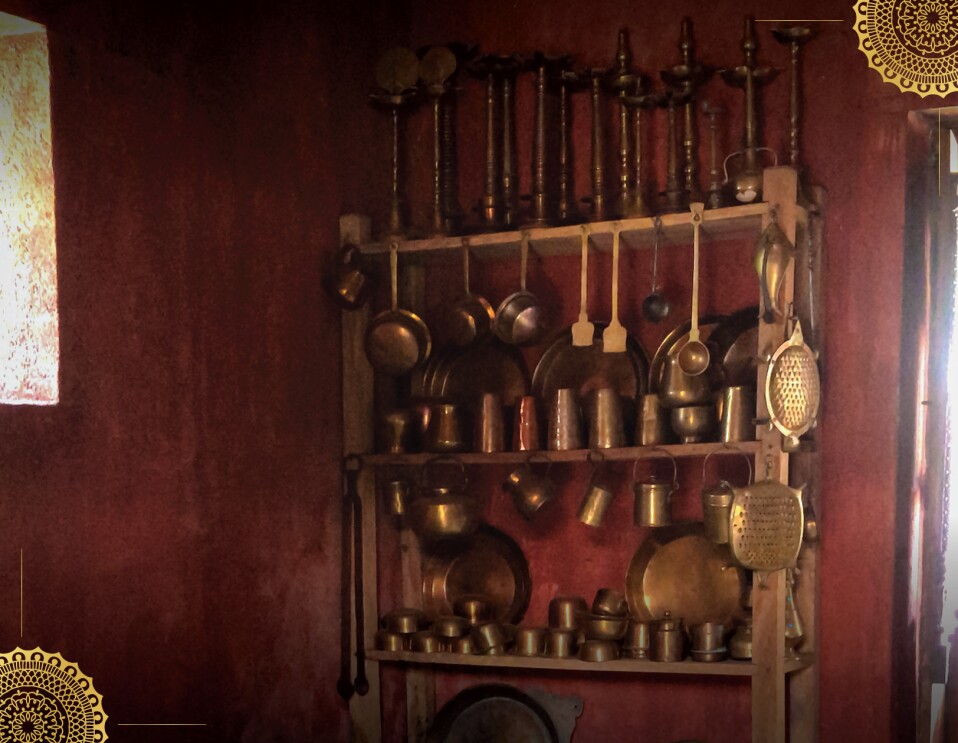
Metal craft in India
Just like diverse languages, metal craft too found its own language in this diverse country. From the Tamtas and the Thateras in North India to folk metal artisans who practiced the lost wax process of metal casting across Odisha, West Bengal, Madhya Pradesh, Andhra and Tamil Nadu, each artisan community added their distinctive touch to these raw materials of the earth.
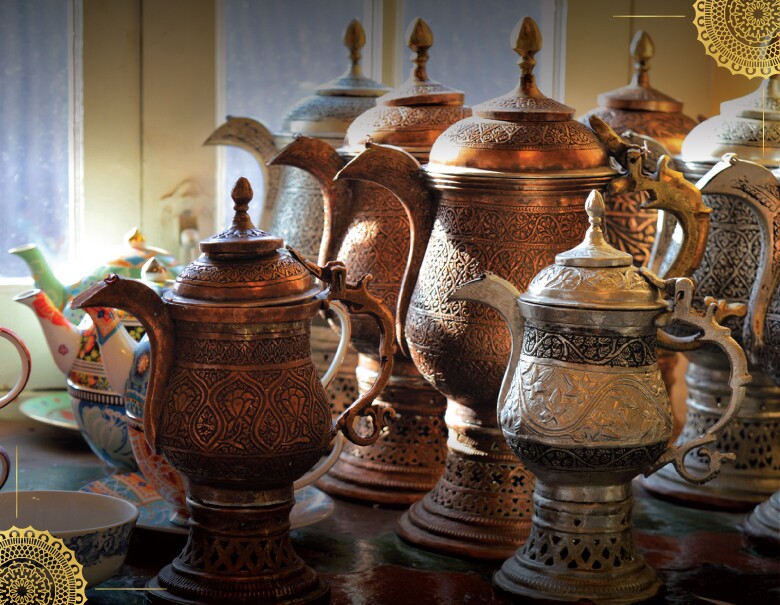
As we were penning this story, we came across mind-boggling information on how ancient mining was done, how wars were fought to acquire gold and silver artisans, and what the journey of metals in India looked like.
Today, the streets of Zaina Kadal in Srinagar boast of beautiful “samovars” (utensils for brewing kehwa and tea) and bowls with intricate floral and calligraphic patterns on copper and silver items. These are then oxidised, which makes the design stand out from the background. This work is known as 'naquashi'.
On any given day, the lanes of the busy industrial town of Moradabad rings with the beating of brass—tan, tan, tan. The city is famous for its brassware (utensils, home décor, artefacts). Overtime, Moradabad, which once made brass idols for worship has now evolved to create Feng Shui items as well, which are also in demand outside the country.
Artwork from the North
As we move further North, we come to Rajasthan, once a hub for metal engraving and lacquer work. The palaces of Rajasthan were adorned with metal artefacts. The shops in the old Tripolia Bazaar still have tourists thronging for metal lacquer bangles. The distinctive art of Jaipur is also called Koftagari or filigree work, where one metal is encrusted into another in the form of wires. Popular souvenirs are swords, daggers and shields.

The heavily forested, indigenous areas of Bastar in Chhattisgarh are a delight for metal art connoisseurs. The local indigenous communities of Bastar are experts in making beautiful figurines of gods, votive animals, oil lamps, carts and animals. There is an area called Kondagaon, where weekly haats display wrought iron artefacts for sale.
The Dokra art (lost wax metal technique) is probably the most popular art form from the hinterlands, with distinctive variations across Andhra Pradesh, Odisha, Madhya Pradesh and Chhattisgarh. These lovely metal artefacts are made from brass scrap filled with clay.
There is a particularly interesting story around Dokra. About three thousand years ago, a craftsman gifted a Dokra necklace to the king of Bastar, now in Chhattisgarh, for his queen. Impressed by his craftsmanship, the king bestowed the title of “Ghadwa”to the master artist. The term is derived from “Ghalna”, which means “melting” and working with wax.
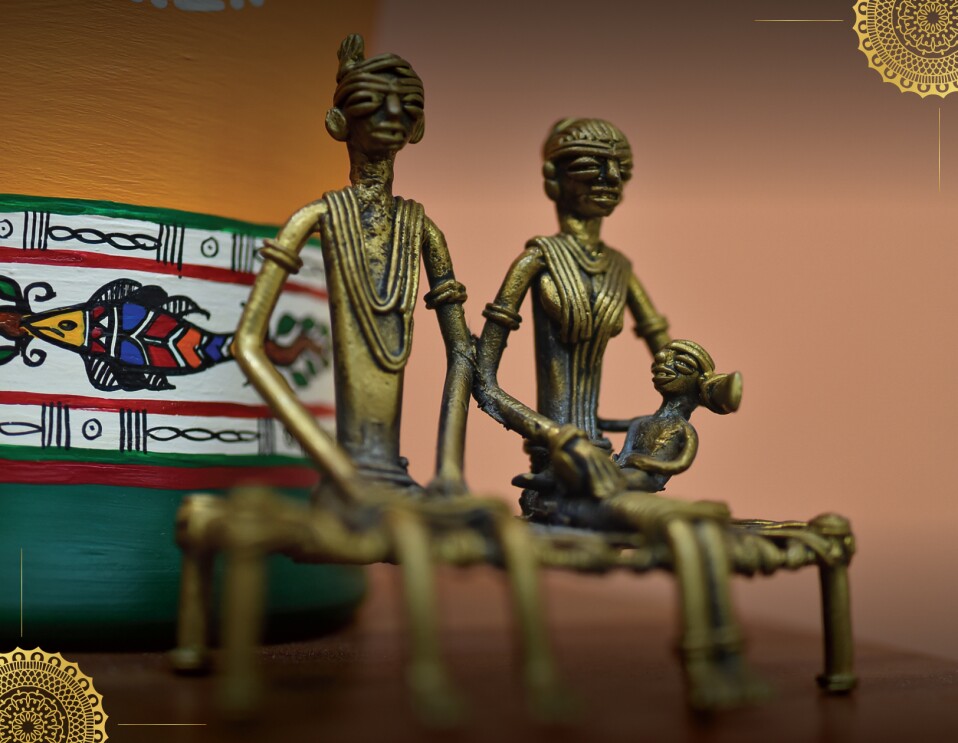
Distinctive styles from the South
India’s metal art would not be complete if we do not mention the exquisite “Bidri” work of Andhra Pradesh, where molten zinc and copper are folded into moulds and engraved to make grooves. These are then inlaid with silver and mother of pearl before being oxidised to give it that characteristic black finish.

Do you know that Bidri artisans believe that their art cannot be reproduced in any other part of the country? This is because they procure the soil for oxidisation from the vicinity of Bidar Fort (hence the name) in Karnataka, a sacred land for this artisan community.
While Tamil Nadu makes brass utensils, Goa makes beautiful divlis (diyas or long, brass lamps), and artisans in Odisha create lovely silver jaali work—each metal sharing its own journey from the bowels of the earth to becoming a cherished artefact.
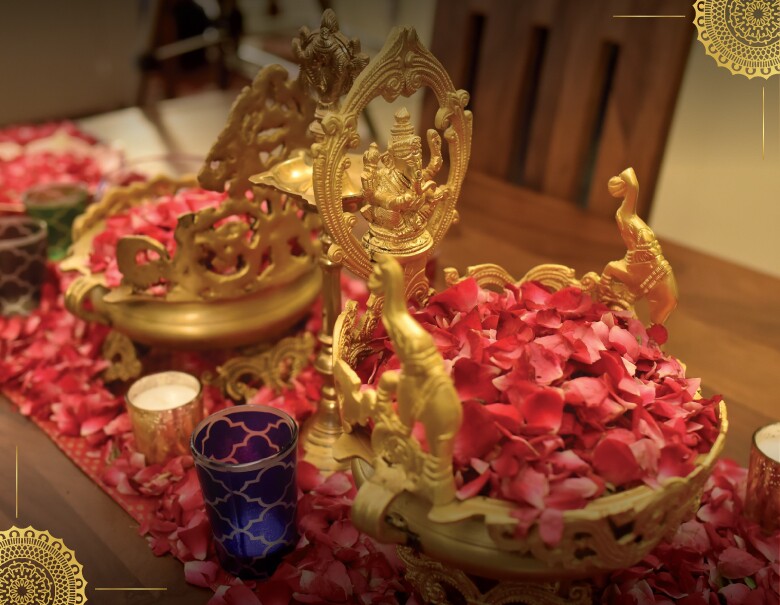
This festive season adorn your corners with glittering metal art, resurrecting the belief in handmade heritage and a bag full of stories that bring old world charm and nostalgia.


